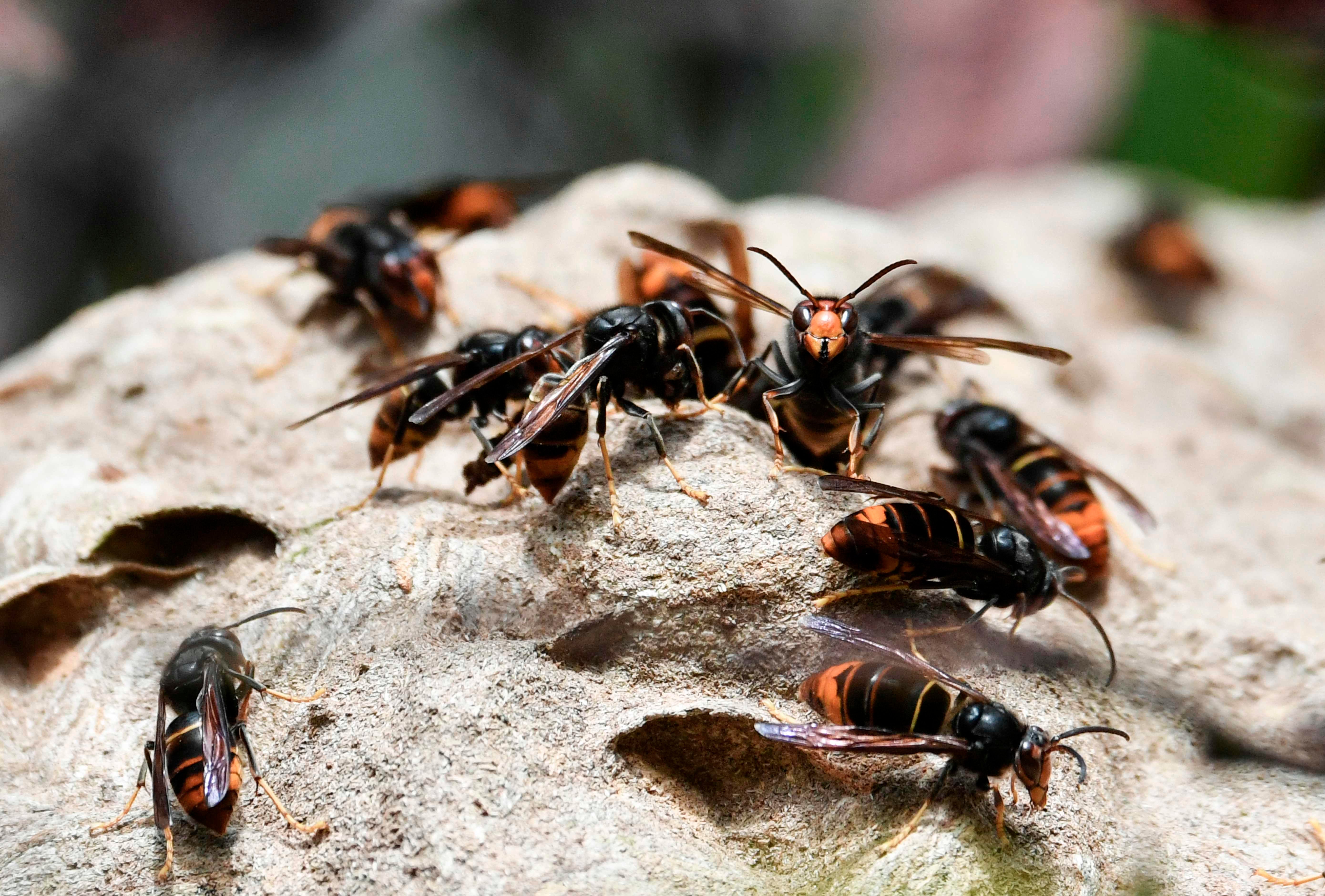
Sex pheromone traps could help stop the spread of Asian giant hornets, according to a new study.
The insects – also known as “murder hornets” – have been spreading across parts of North America and are threatening bee populations and crops.
Now, scientists in the US think they have found a way of using the stimulating odours produced by a hornet queen as bait to trap and track the fearsome insects.
Study author Professor James Nieh at the University of California, San Diego, said: “My usual plea is that people should stop calling them ‘murder hornets’ because they are large and perhaps frightening but not truly murderous.
“They are amazing social insects, but they don’t belong in North America and harm our critical bee populations, so we should remove them.”
While their nickname is misleading, they are threatening bee populations along with millions of pounds worth of crops. Honey bees have few defences against these insects, which can quickly destroy an entire colony.

During their research, scientists found three of the major chemicals in the giant hornet queen’s sex pheromone, including hexanoic, octanoic and decanoic acid.
They then captured male hornets by laying traps near their nests and places where they typically reproduce. The hornets’ brain activity and antennae were highly sensitive to the pheromone, the researchers found.
These compounds found in the queen’s pheromone could easily be purchased and deployed in the field immediately.
Professor Nieh said: “The males are drawn to the odours of the females since they typically mate with them near their nests.
“In two field seasons we were able to rapidly collect thousands of males that were attracted to these odours.”
The researchers are hoping to test their traps in more field locations to see whether they can chemically attract hornets over distances of a kilometre or more.
Professor Nieh said: “Because these pheromone-based traps are fairly inexpensive I think they could be readily deployed for sampling across a large geographic range.
“We know where they have been found, so the big question is whether they are expanding. Where is that invasion front?”
It is not clear how Asian giant hornets, known scientifically as Vespa mandarinia, first came to North America, but they have been documented in British Columbia and Washington state.
Rather than patent their discovery, the researchers have published their findings in the hope it will help document the hornet’s spread. Where and how rapidly they are spreading could be mapped using predictive models once more traps have been deployed.

Professor Nieh said: “We hope that others, especially in invaded areas, will take the protocol we have established and test this method.
“We’ve described the chemical blends needed for these traps, which could reduce the number of males available to mate with females to help depress the population but primarily would help us figure out where they are.”
The findings were published in the journal Current Biology.
Additional reporting by SWNS







